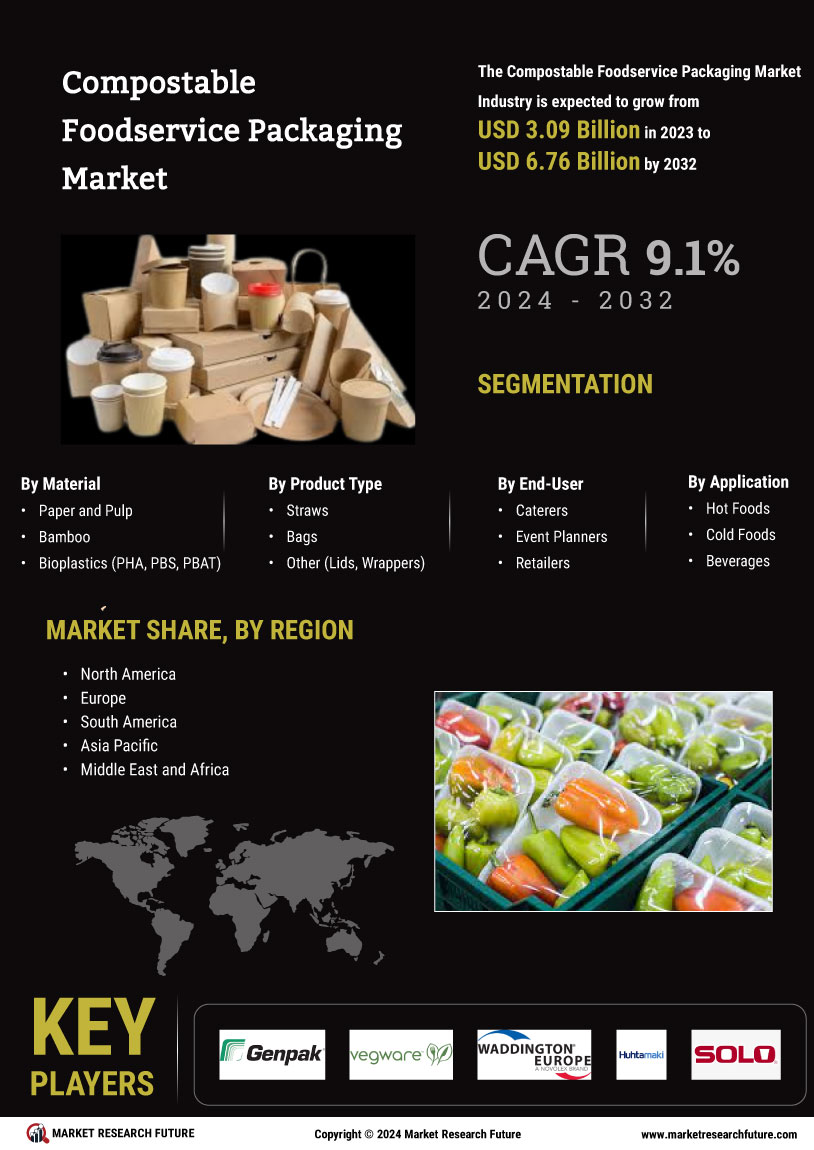Corporate Sustainability Initiatives
Corporate sustainability initiatives are increasingly influencing the dynamics of the Compostable Foodservice Packaging Market. Many companies are adopting comprehensive sustainability strategies that encompass the use of compostable packaging as a key component. This trend is driven by the recognition that sustainable practices can enhance brand loyalty and attract environmentally conscious consumers. Market data reveals that businesses that prioritize sustainability often experience improved customer engagement and retention. As corporations commit to reducing their environmental footprint, the demand for compostable foodservice packaging is expected to rise. The Compostable Foodservice Packaging Market is likely to thrive as more companies integrate sustainable packaging solutions into their operational frameworks.
Shift Towards Circular Economy Models
The shift towards circular economy models is emerging as a transformative driver for the Compostable Foodservice Packaging Market. This approach emphasizes the importance of designing products and systems that minimize waste and promote resource efficiency. As businesses and consumers alike embrace circularity, the demand for compostable packaging solutions is expected to increase. Market data suggests that companies adopting circular economy principles are more likely to invest in sustainable packaging options, thereby fostering innovation and collaboration within the industry. The Compostable Foodservice Packaging Market stands to benefit from this paradigm shift, as it aligns with the broader goals of sustainability and waste reduction.
Innovations in Compostable Material Technologies
Innovations in compostable material technologies are emerging as a significant driver for the Compostable Foodservice Packaging Market. Advances in material science have led to the development of new biodegradable polymers that offer enhanced performance characteristics, such as durability and moisture resistance. These innovations enable foodservice providers to utilize compostable packaging without compromising on quality or functionality. Market data indicates that the introduction of high-performance compostable materials is expanding the range of applications within the foodservice sector, thereby attracting a broader customer base. As these technologies continue to evolve, the Compostable Foodservice Packaging Market is poised for substantial growth, driven by the increasing availability of effective and reliable compostable solutions.
Rising Consumer Awareness of Environmental Issues
The increasing awareness among consumers regarding environmental issues appears to be a pivotal driver for the Compostable Foodservice Packaging Market. As individuals become more informed about the detrimental effects of plastic waste on ecosystems, they are actively seeking sustainable alternatives. This shift in consumer behavior is reflected in market data, which indicates that a significant percentage of consumers are willing to pay a premium for eco-friendly packaging solutions. Consequently, foodservice providers are compelled to adapt their packaging strategies to meet this demand, thereby propelling the growth of the compostable packaging sector. The Compostable Foodservice Packaging Market is likely to benefit from this trend, as businesses strive to align their practices with consumer expectations for sustainability.
Government Regulations Promoting Sustainable Practices
Government regulations aimed at reducing plastic waste and promoting sustainable practices are likely to play a crucial role in shaping the Compostable Foodservice Packaging Market. Various jurisdictions have implemented bans on single-use plastics and have introduced incentives for businesses that adopt biodegradable materials. This regulatory landscape encourages foodservice operators to transition towards compostable packaging solutions. Market data suggests that regions with stringent regulations experience a more rapid adoption of compostable materials, as businesses seek compliance while enhancing their brand image. The Compostable Foodservice Packaging Market stands to gain from these regulatory frameworks, which not only drive demand but also foster innovation in sustainable packaging solutions.

















Leave a Comment